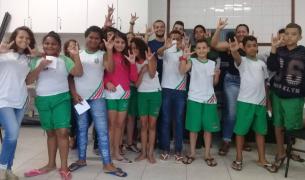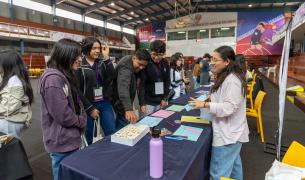What is the future of education—and who decides?

This is the first entry in the Shaping a Better Future Blog Series, where we'll explore the purpose and practices of education and the progress we can collectively make to ensure all students have access to the holistic education they need to shape a better future.
Every morning, my five-year-old, Immanuel, tries to avoid going to school. One day recently, while pulling all the usual tricks—from feigning a fever to inventing a new illness—he asked me why he had to go to school at all. In his exact words, "I wish school didn't exist." The irony was that Immanuel said this to me while I was deep into planning the Global Forum for Shaping a Better Future—a space where we were all coming together to discuss the purpose of education.
I had his question in the back of my mind throughout the Forum. In a world where kids like Immanuel can access any kind of information and can decide how deeply they want to explore a subject—like Immanuel’s love for flags—and their peers in more marginalized communities are facing a stark digital divide, I wondered about the role of schools and how we can reshape education systems for this generation of students and for generations to come.
Throughout the Forum, we centered ourselves on questions about the purpose of education and who gets to decide it. Around tables together with students, teachers, school leaders, policymakers, funders, and civil society organizations, we came together for three days to discuss the purpose and practices of education, and what progress we can collectively make towards reshaping systems to achieve a better future.
For many of us in Singapore, these questions are still ever-present and there is a collective desire to create a space where we can continue to surface and reflect together on the implications for our own work and institutions, and in our roles as parents, community members, and citizens. As a result, this Shaping a Better Future blog series will provide a platform for those in the global education ecosystem who are committed to reshaping education towards equipping students to shape a better future, to continue to explore the following questions over the coming months:
-
Across our diverse communities, what is the purpose of education and who decides?
-
How do we transform our classrooms, systems and leadership in pursuit of this purpose?
-
How can we collaborate together to advance progress?
Among the reflections and provocations shared throughout the Forum, those that have stayed with me most persistently center the necessity of our efforts being globally informed and locally rooted: How do we work with leaders in diverse communities and surface their insights and learnings around shifting the purpose and practices of education? How can we enable these leaders to learn from each other across contexts? How do we bridge the gap between global research and local learning, and vice versa?
As I think about the work of the Global Institute for Shaping a Better Future, I am encouraged by our mission to bring people together to explore how we can shift the purpose of education to developing students holistically so they can improve our collective welfare. Through the Global Institute’s four pillars—Academy, Research & Learning Lab, Resources, and Outreach & Engagement—we are weaving together a global learning community committed to reshaping education to reshape the future. We’re working to ensure all children—especially those in the most underserved communities—have the academic and non-academic opportunities to develop holistically as leaders, changemakers, and compassionate citizens of the world..
We aim to bridge the gap between practice and research, between local innovation and global insight. In doing so, we are building something greater than the sum of our parts—a collective force for transformation. I hope and believe the Global Institute will be a bridge connecting people, ideas, and possibilities across borders. Building on the foundations of Teach For All and its extensive work in developing leaders worldwide, the Global Institute aims to expand this work within its network and beyond. Through the Global Institute, we will remove barriers, spark bold action, and shape a better, more just future for and with our children, our communities, and our world. If we can achieve this, perhaps we will come one step closer to answering Immanuel’s question about why schools should exist.



